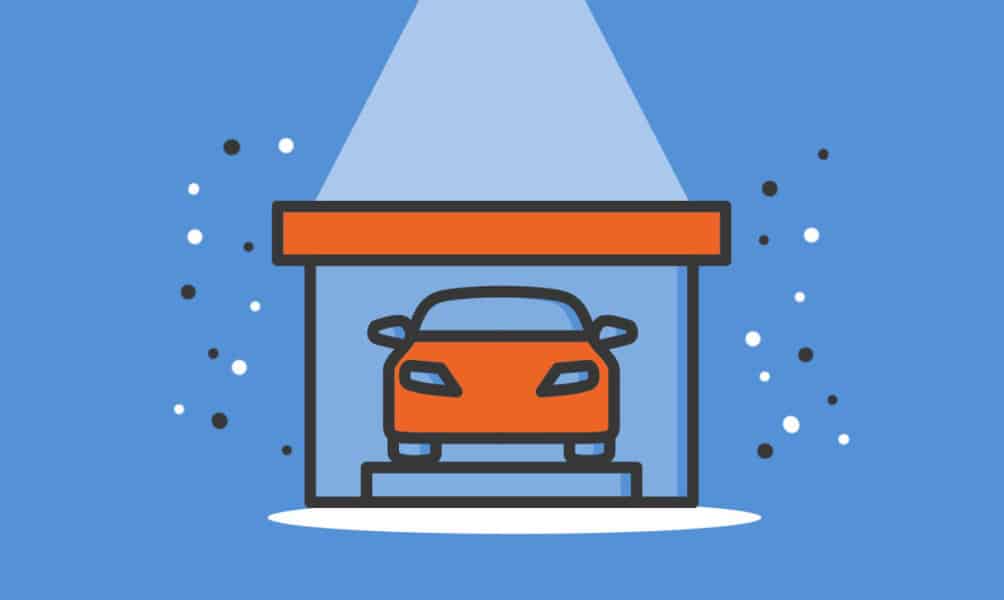
Carolyn Young is a business writer who focuses on entrepreneurial concepts and the business formation. She has over 25 years of experience in business roles, and has authored several entrepreneurship textbooks.
David has been writing and learning about business, finance and globalization for a quarter-century, starting with a small New York consulting firm in the 1990s.
Published on December 20, 2021

$500,000 - $2 million p.a.
$200,000 - $300,000 p.a.
Here are the most important considerations when you are starting your car dealership business:
![]()
Interactive Checklist at your fingertips—begin your car dealership today!
You May Also Wonder:
Is owning a car dealership profitable?
The new and used car industry in the United States is worth over a trillion dollars, and even a small used car dealership can tap into a share of that. You can markup used cars between 25% and 45% so your profit margins will be healthy.
What car has the highest profit margin?
The Ford F-Series and Range Rover have the highest profit margin. Next is the GMT 800.
What is the most profitable part of a car dealership?
Used cars tend to be more profitable than new cars. It’s best for car dealerships to bring in revenue from new cars, used cars, and repairs.
What is the growth potential of car dealership?
The growth potential of a car dealership is really unlimited. You can expand to multiple locations in your area, or even across the country.
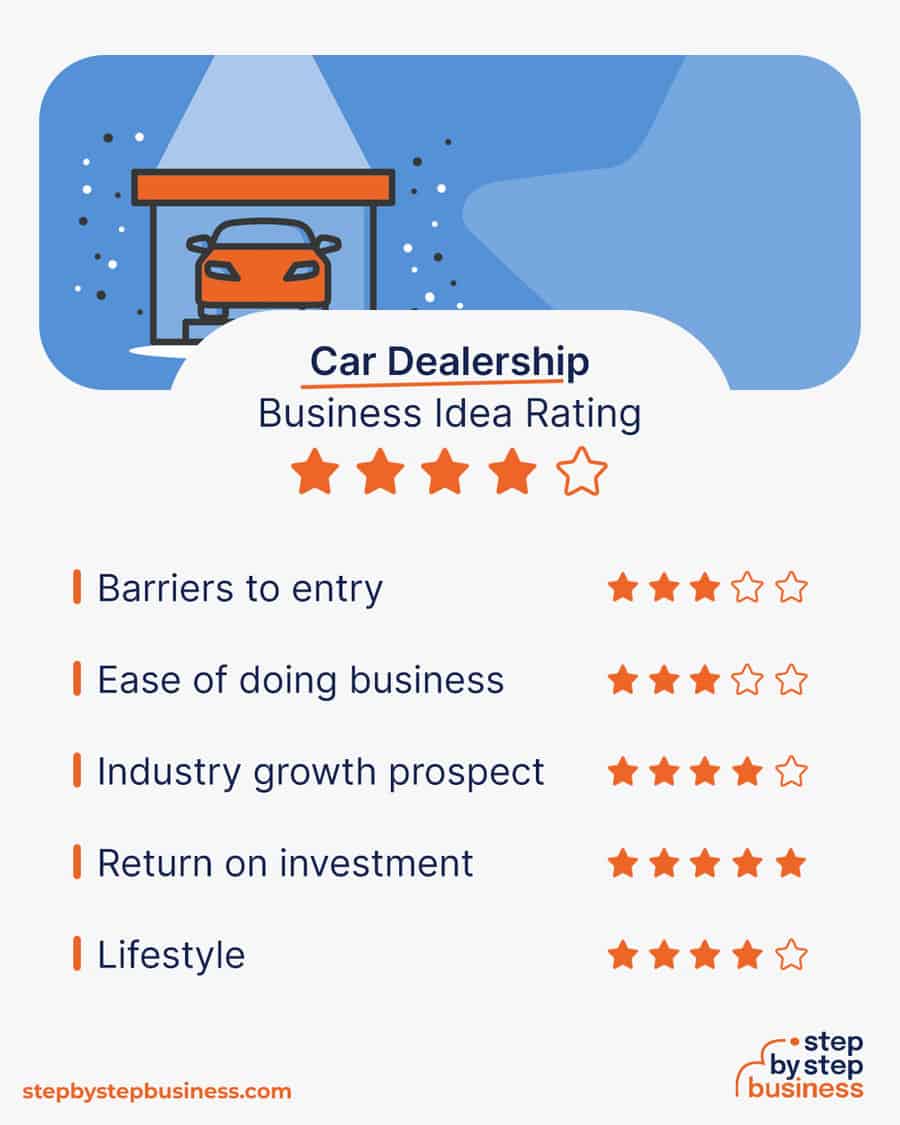
Every business, including a car dealership, has pros and cons that you should consider before deciding whether it’s right for you.
Hybrid and electric vehicles are among the hotter trends in the car industry. Tesla and its electric cars have been in the spotlight for years, and seem to be popping up everywhere lately. Market research firm Statista reports that Tesla sales amounted to almost two million in 2023. Eco-friendly auto options such as superior fuel efficiency and lighter-weight cars made of composite materials are in demand, as are digital safety features such as forward-collision warnings and automatic emergency braking.((https://www.statista.com/statistics/502208/tesla-quarterly-vehicle-deliveries/))
Despite a 40% price increase since March 2020, as reported by the US Bureau of Labor Statistics, consumers are flocking to the used car market due to supply chain disruptions for new cars. This presents a significant opportunity for the smart and aggressive entrepreneur.((https://www.bls.gov/news.release/cpi.t01.htm))
Another industry trend is the ongoing shift to the online marketplace, which is no longer just for new cars. Shift, Vroom, and Carvana are major online players in this market, selling nearly 250,000 used cars combined in the first half of 2021.((https://www.bloomberg.com/news/articles/2021-09-28/used-car-sales-vroom-carvana-shift-thrive-during-pandemic#xj4y7vzkg))
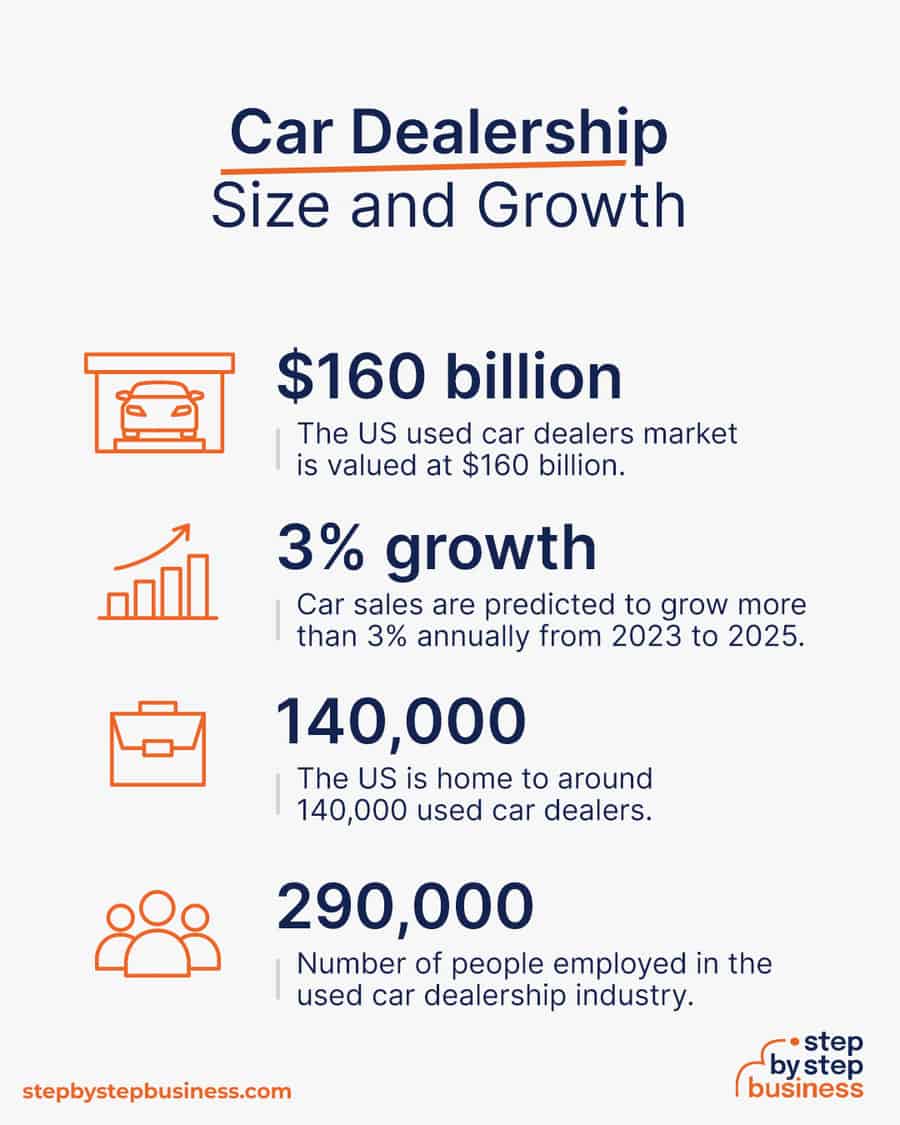
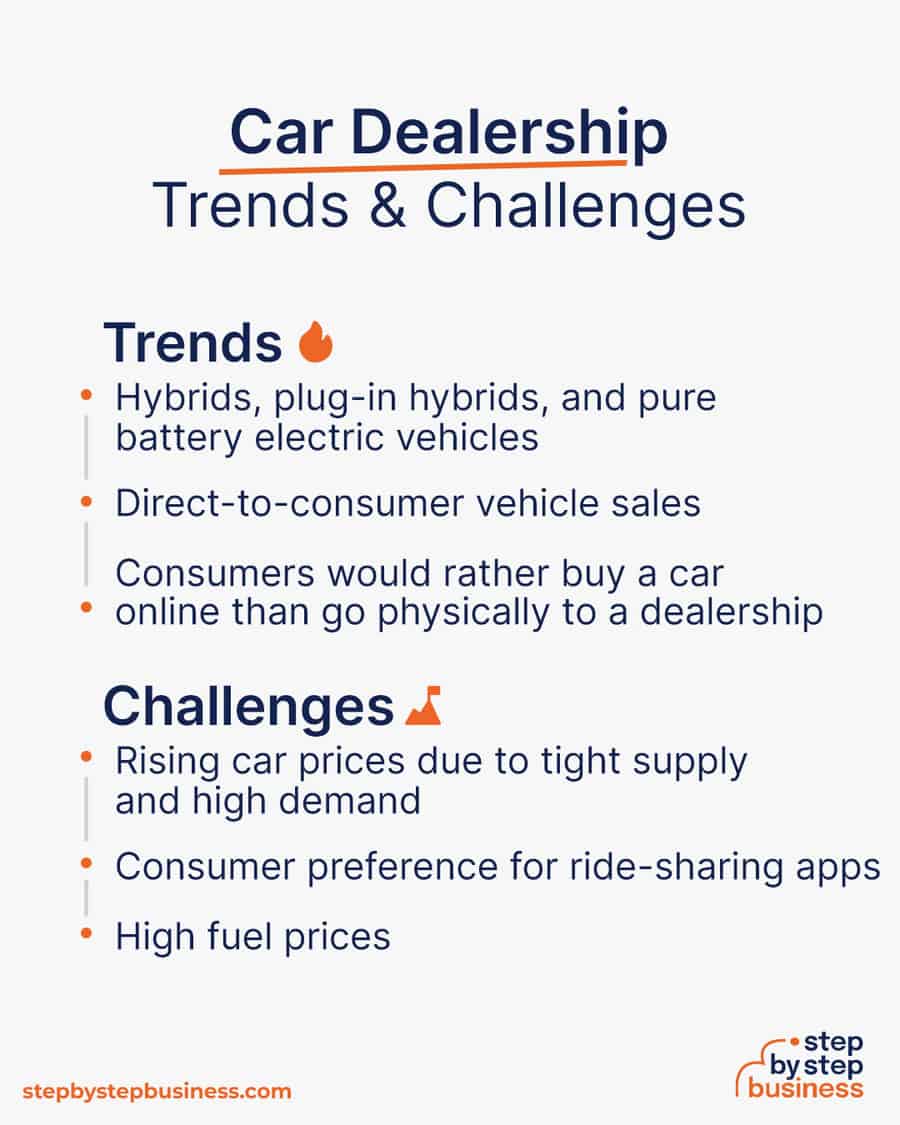
Trends
Challenges
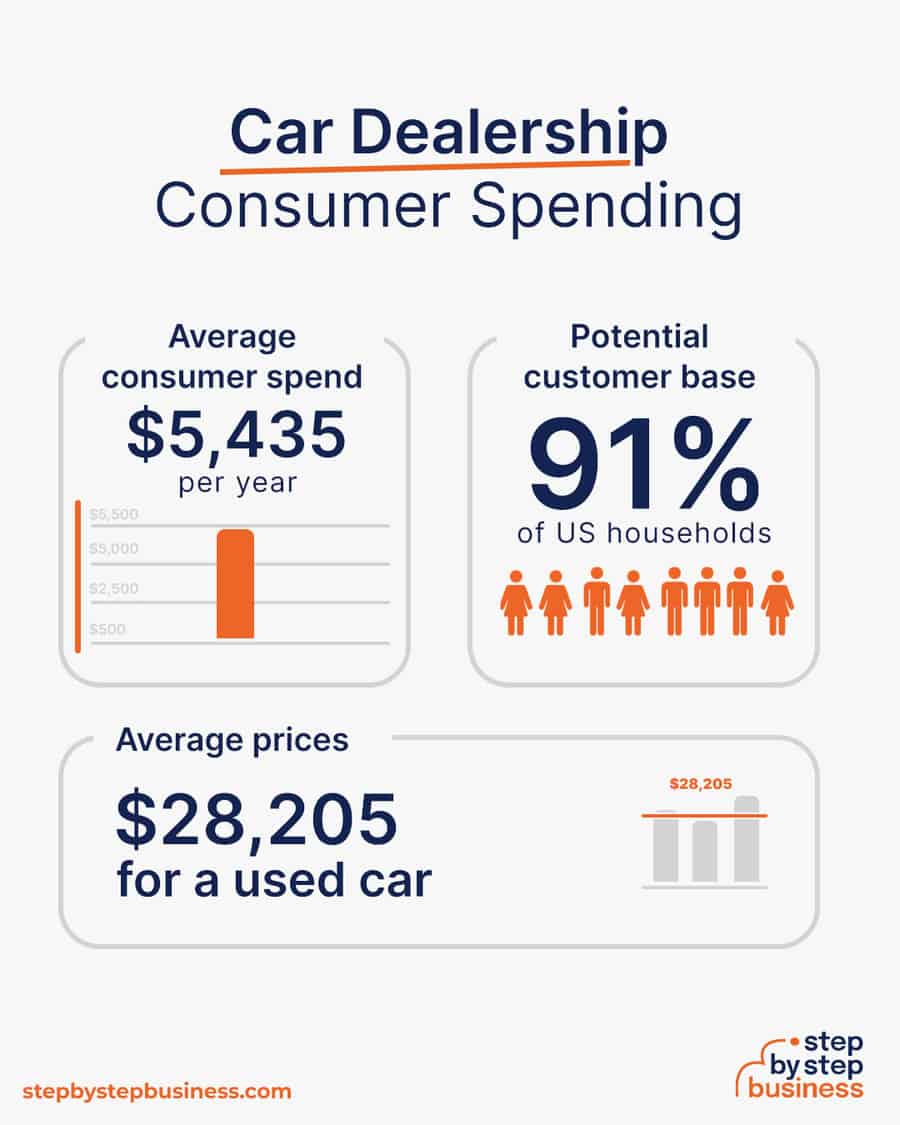
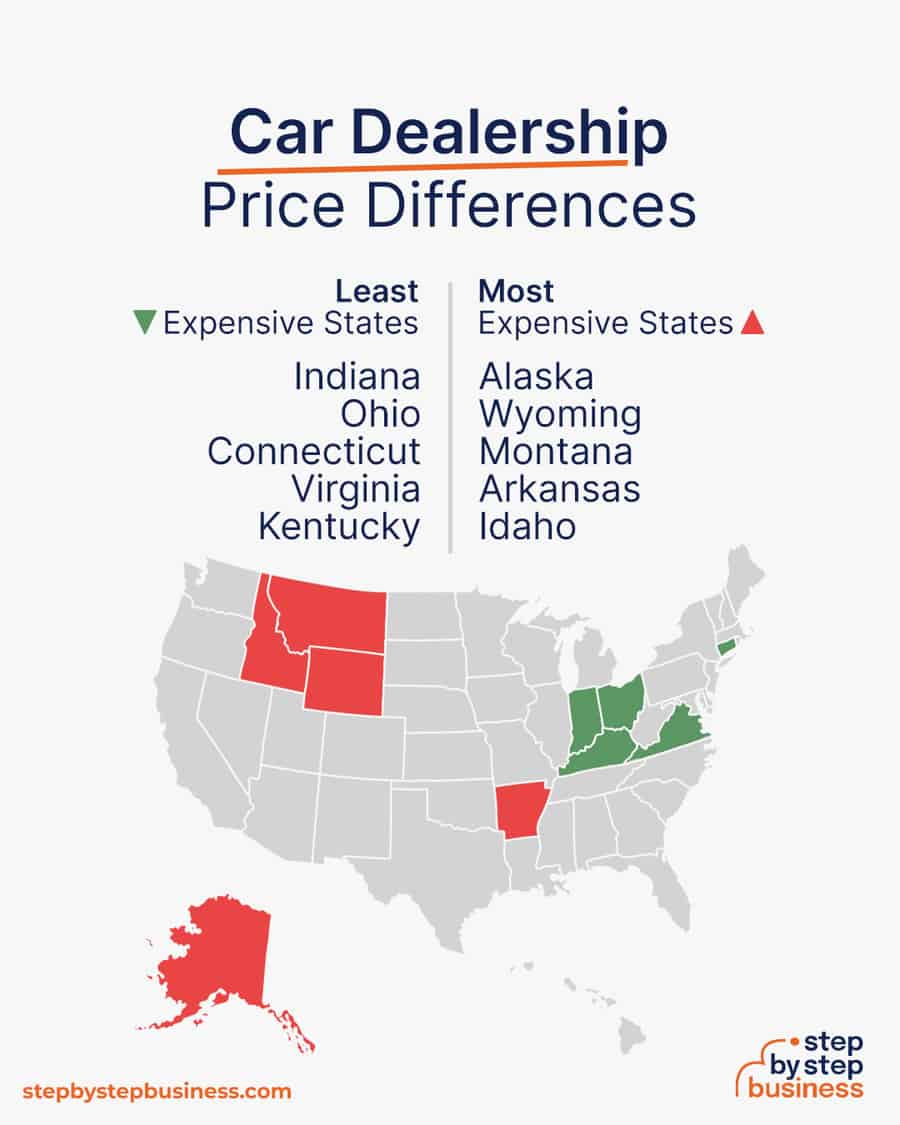
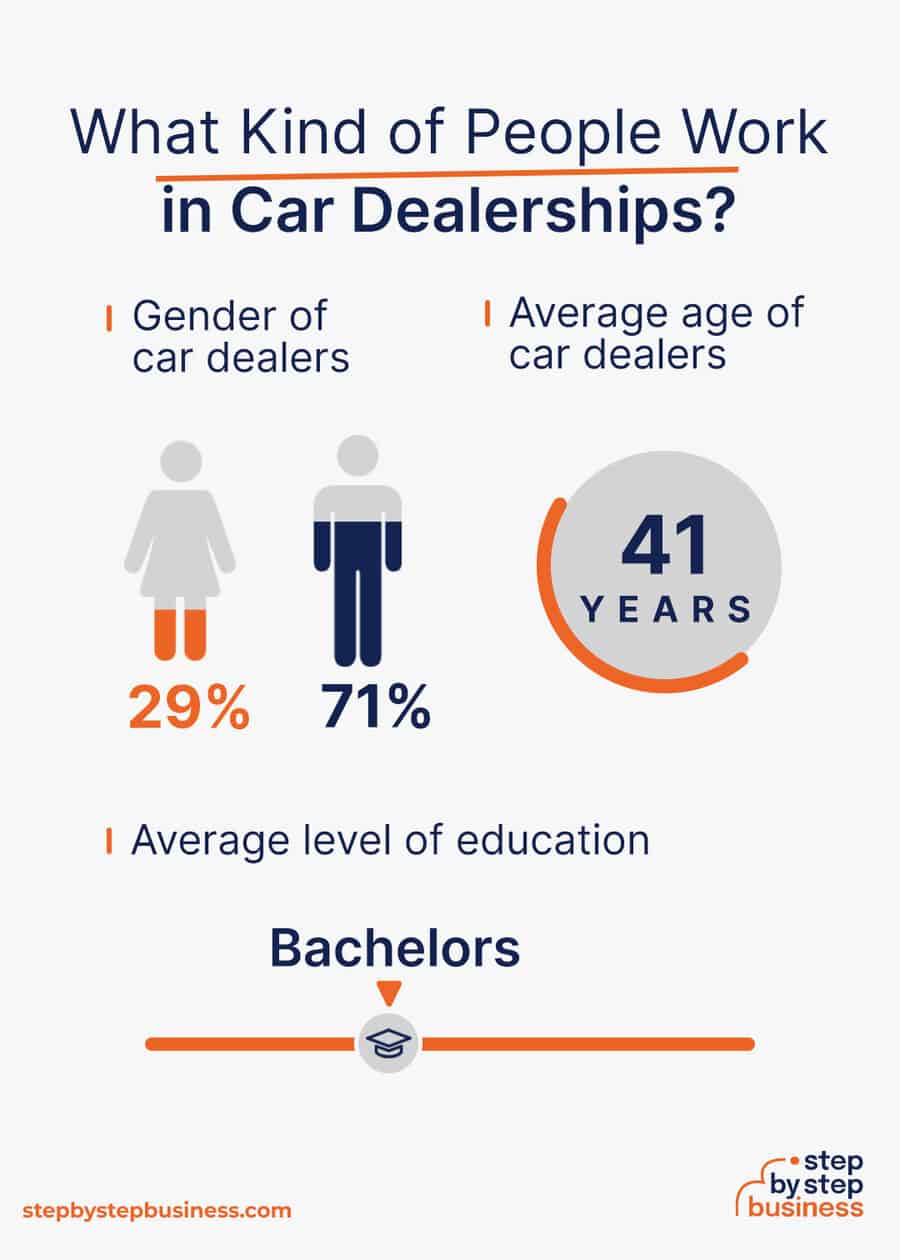
Startup costs for a car dealership range from around $30,000 for a small used car lot to well over $100,000 for a large new car dealership. The biggest expense is, of course, the initial inventory of vehicles, though you can start small with just a handful of used cars and a great website.
| Startup Costs | Ballpark Range | Average |
|---|---|---|
| Setting up a business name and corporation | $150–$200 | $175 |
| Licenses and permits | $200–$300 | $250 |
| Auto dealer bonds | $100–$500 | $300 |
| Insurance | $100–$300 | $200 |
| Business cards and brochures | $200–$300 | $250 |
| Website setup | $1,000–$3,000 | $2,000 |
| Location rental security deposit | $3,000–$8,000 | $5,500 |
| Initial inventory | $25,000–$100,000 | $62,500 |
| Total | $29,750–$112,600 | $71,175 |
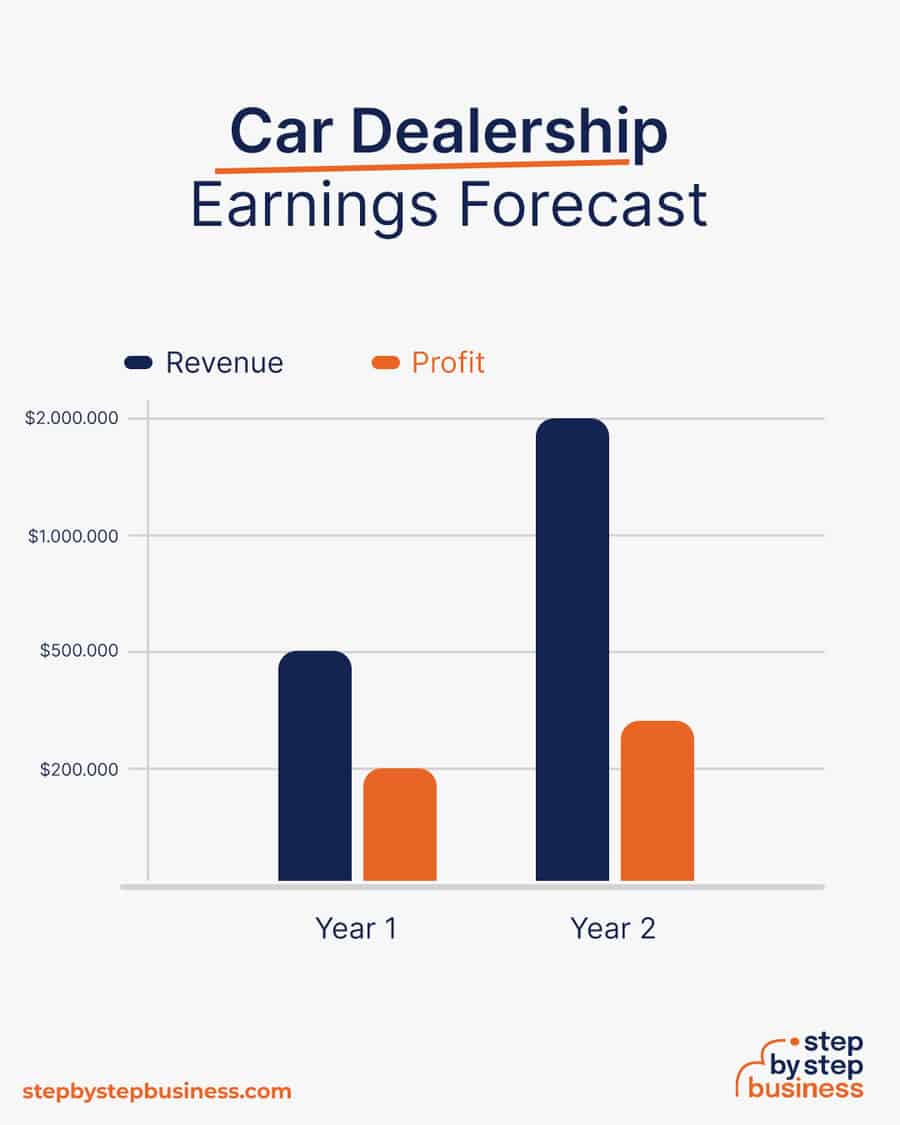
Markups on used cars range from 25% to 45%, while the average markup on a new car is 8% to 13%. You can use our markup calculator to calculate your sale price and how much revenue and profit you will earn with different markup percentages. When you work by yourself, your profit margin should be around 40%. The average price of a used car is about $25,000. But at least initially you will probably be handling lower-priced cars, so let’s assume you start selling used cars for an average price of $10,000.
In your first year or two, you could run your own used car lot and sell 50 cars in a year, bringing in $500,000 in annual revenue. This would mean $200,000 in profit, assuming that 40% margin. As your brand gains recognition, sales could climb to 200 cars a year. But due to your new staff, your margin would fall to around 15%, the industry average. With an expected annual revenue of $2 million, you’d have a pre-tax profit of $300,000.
There are a few barriers to entry for a car dealership. Your biggest challenges will be:
If you’re still not sure whether this business idea is the right choice for you, here are some related business opportunities to help you on your path to entrepreneurial success.
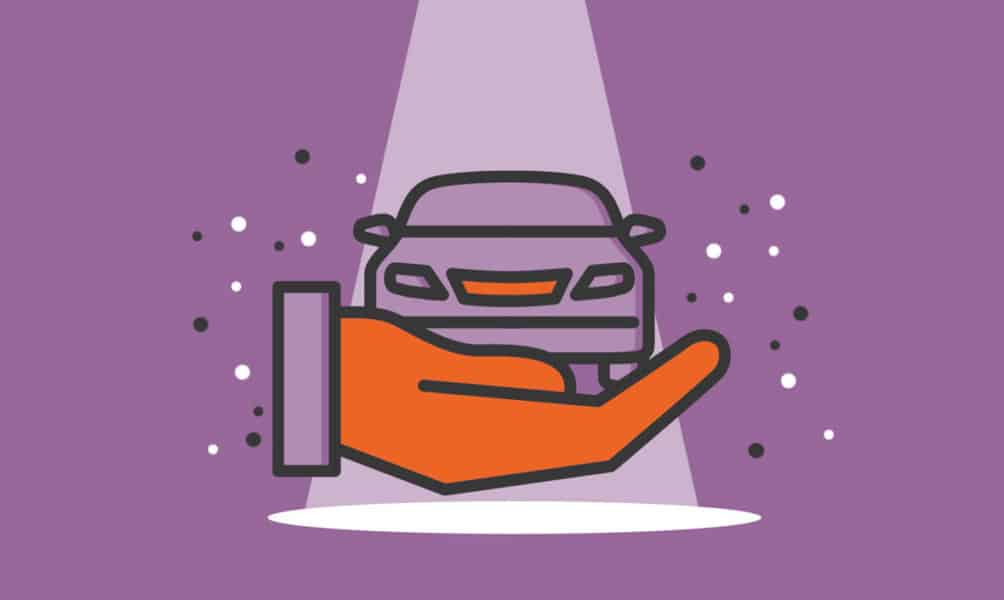

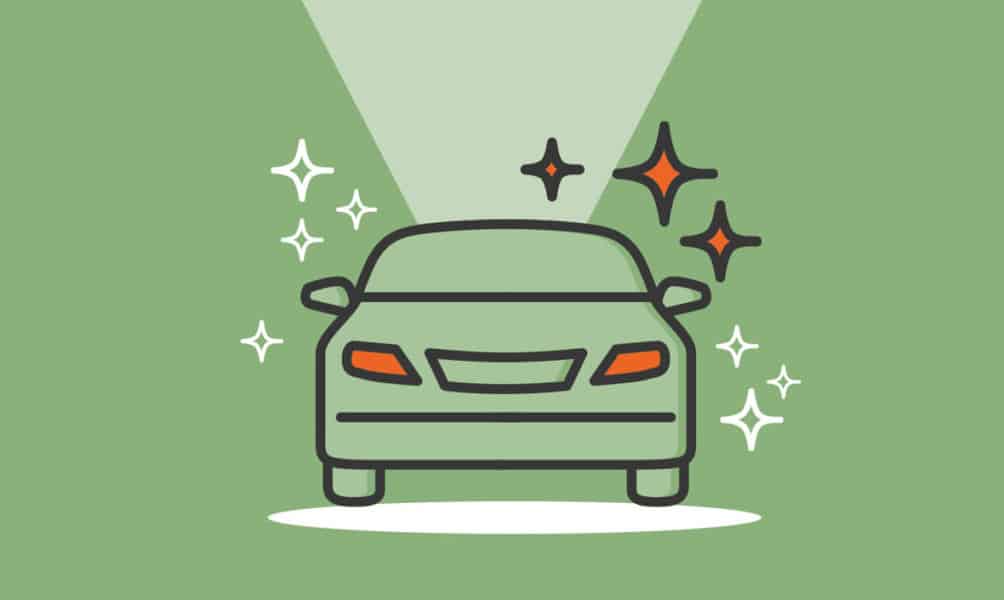
Now that you know what’s involved in starting a car dealership, it’s a good idea to hone your concept in preparation to enter a competitive market.
Market research will give you the upper hand, even if you’re already positive that you have a perfect product or service. Conducting market research is important, because it can help you understand your customers better, who your competitors are, and your business landscape.
Research car dealerships in your area to see what they offer. Maybe there’s no used car dealership that offers warranties or focuses on lower-priced used cars. You’re looking for a gap in the market in a particular part of town that you can fill.
![]()
You might consider targeting a niche market by specializing in a certain aspect of your industry, such as only used trucks or classic American models like Mustangs and Camaros.
This could jumpstart your word-of-mouth marketing and attract clients right away.
First, determine what kinds of cars you want to specialize in. You can offer used cars, new cars, or both, but you also need to determine if you’re going to offer value-priced models or higher-end models. Then determine what else you might offer, such as:
In addition to a car dealership, you can also incorporate a motorcycle dealership into your business.
The typical markup for used cars ranges from 25% to 45% and the markup for new cars is between 8% and 13%. If you specialize in used cars, your price will depend on what price you can acquire cars for. You’ll need to know the value of various models, so you’ll want to keep the Kelley Blue Book nearby, to provide value estimates. You should purchase cars at below market value so that you can mark them up to a reasonable price. For new cars, you’ll be marking up from the wholesale price offered by the manufacturer.
Once you know your costs, you can use our profit margin calculator to determine your markup and final price points. Remember, the prices you use at launch should be subject to change if warranted by the market.
Your target market will depend on what type of cars you decide to specialize in. If you sell used cars that are lower priced, your customers may be younger, so you are more likely to find them on sites like Instagram or TikTok rather than Facebook.
You’ll probably want to rent a location that has a big enough lot for you to park your cars, and it should be big enough for you to grow. You can sell cars online, but you still need a lot to store them. It should also have a structure that you can use as an office.
You should choose a location with a lot of road traffic but you also need a great website to make online sales. You can find commercial space to rent in your area on Craigslist, Crexi, and Commercial Cafe.
When choosing a commercial space, you may want to follow these rules of thumb:
Here are some ideas for brainstorming your business name:
![]()
Discover over 300 unique car dealership name ideas here. If you want your business name to include specific keywords, you can also use our car dealership name generator. Just type in a few keywords, hit Generate, and you’ll have dozens of suggestions at your fingertips.
Once you’ve got a list of potential names, visit the website of the US Patent and Trademark Office to make sure they are available for registration and check the availability of related domain names using our Domain Name Search tool. Using “.com” or “.org” sharply increases credibility, so it’s best to focus on these.
Powered by GoDaddy.com
Finally, make your choice among the names that pass this screening and go ahead with domain registration and social media account creation. Your business name is one of the key differentiators that set your business apart. Once you pick your company name and start with the branding, it is hard to change the business name. Therefore, it’s important to carefully consider your choice before you start a business entity.
Here are the key components of a business plan:

If you’ve never created a business plan, it can be an intimidating task. You might consider hiring a business plan specialist to create a top-notch business plan for you.
Registering your business is an absolutely crucial step — it’s the prerequisite to paying taxes, raising capital, opening a bank account, and other guideposts on the road to getting a business up and running.
Plus, registration is exciting because it makes the entire process official. Once it’s complete, you’ll have your own business!
Your business location is important because it can affect taxes, legal requirements, and revenue. Most people will register their business in the state where they live, but if you are planning to expand, you might consider looking elsewhere, as some states could offer real advantages when it comes to a car dealership.
If you’re willing to move, you could really maximize your business! Keep in mind that it’s relatively easy to transfer your business to another state.
Business entities come in several varieties, each with its pros and cons. The legal structure you choose for your car dealership will shape your taxes, personal liability, and business registration requirements, so choose wisely.
Here are the main options:

We recommend that new business owners choose LLC as it offers liability protection and pass-through taxation while being simpler to form than a corporation. You can form an LLC in as little as five minutes using an online LLC formation service. They will check that your business name is available before filing, submit your articles of organization, and answer any questions you might have.
Choose Your State
We recommend ZenBusiness as the Best LLC Service for 2024
starts at $0, plus state fees starts at $0, plus state feesThe final step before you’re able to pay taxes is getting an Employer Identification Number or EIN. You can file for your EIN online, or by mail/fax. Visit the IRS website to learn more. Keep in mind, if you’ve chosen to be a sole proprietorship you can simply use your social security number as your EIN.
Once you have your EIN, you’ll need to choose your tax year. Financially speaking, your business will operate in a calendar year (January–December) or a fiscal year, a 12-month period that can start in any month. This will determine your tax cycle, while your business structure will determine which taxes you’ll pay.
![]()
The IRS website also offers a tax-payers checklist, and taxes can be filed online.
It is important to consult an accountant or other professional to help you with your taxes to ensure you are completing them correctly.
Securing financing is your next step and there are plenty of ways to raise capital:
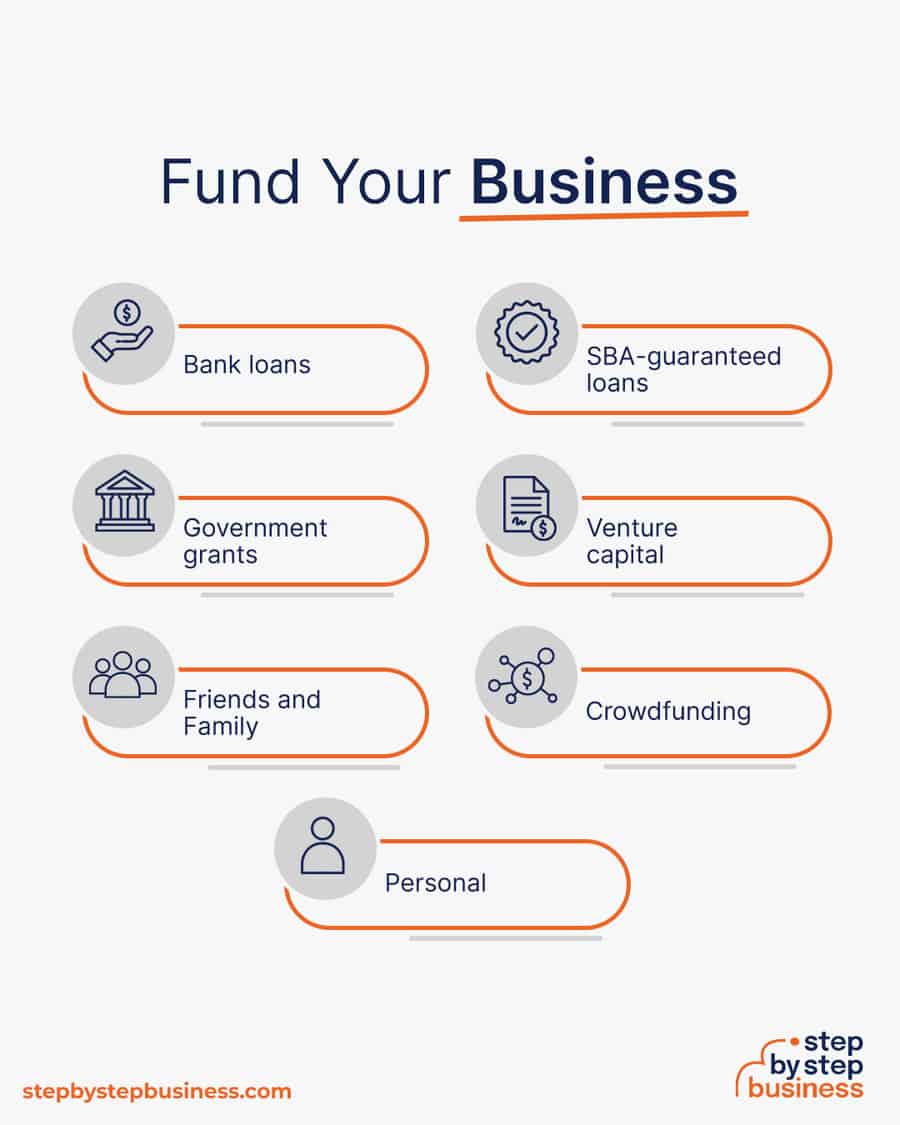
Bank and SBA loans are probably the best options, other than friends and family, for funding a car dealership. You might also try crowdfunding if you have an innovative concept.
Starting a car dealership requires obtaining a number of licenses and permits from local, state, and federal governments.
Federal regulations, licenses, and permits associated with starting your business include doing business as (DBA), health licenses and permits from the Occupational Safety and Health Administration (OSHA), trademarks, copyrights, patents, and other intellectual properties, as well as industry-specific licenses and permits.
You need to meet the requirements of your state to get a dealer license, and you need an Auto Dealer Bond as required by your state.
You may also need state-level and local county or city-based licenses and permits. The license requirements and how to obtain them vary, so check the websites of your state, city, and county governments or contact the appropriate person to learn more.
You could also check this SBA guide for your state’s requirements, but we recommend using MyCorporation’s Business License Compliance Package. They will research the exact forms you need for your business and state and provide them to ensure you’re fully compliant.
This is not a step to be taken lightly, as failing to comply with legal requirements can result in hefty penalties.
If you feel overwhelmed by this step or don’t know how to begin, it might be a good idea to hire a professional to help you check all the legal boxes.
Before you start making money you’ll need a place to keep it, and that requires opening a bank account.
Keeping your business finances separate from your personal account makes it easy to file taxes and track your company’s income, so it’s worth doing even if you’re running your car dealership as a sole proprietorship. Opening a business bank account is quite simple and similar to opening a personal one. Most major banks offer accounts tailored for businesses — just inquire at your preferred bank to learn about their rates and features.
Banks vary in terms of offerings, so it’s a good idea to examine your options and select the best plan for you. Once you choose your bank, bring in your EIN (or Social Security Number if you decide on a sole proprietorship), articles of incorporation, and other legal documents and open your new account.
Business insurance is an area that often gets overlooked yet it can be vital to your success as an entrepreneur. Insurance protects you from unexpected events that can have a devastating impact on your business.
Here are some types of insurance to consider:

As opening day nears, prepare for launch by reviewing and improving some key elements of your business.
Being an entrepreneur often means wearing many hats — from marketing to sales to accounting — which can be overwhelming. Fortunately, many websites and digital tools are available to help simplify many business tasks.
You may want to use industry-specific software, such as CDK Global and vAuto, to manage your inventory and sales.
Website development is crucial because your site is your online presence and needs to convince prospective clients of your expertise and professionalism.
You can create your own website using website builders. This route is very affordable, but figuring out how to build a website can be time-consuming. If you lack tech savvy, you can hire a web designer or developer to create a custom website for your business.
However, people are unlikely to find your website unless you follow Search Engine Optimization (SEO) practices. These are steps that help pages rank higher in the results of top search engines like Google.
Here are some powerful marketing strategies for your future business:

Unique selling propositions, or USPs, are the characteristics of a product or service that set it apart from the competition. Today, customers are inundated with buying options, so you’ll have a real advantage if they are able to quickly grasp how your car dealership meets their needs or wishes. It’s wise to do all you can to ensure your USPs stand out on your website and in your marketing and promotional materials, stimulating buyer desire.
Global pizza chain Domino’s is renowned for its strong USP: “Hot pizza in 30 minutes or less, guaranteed.” Signature USPs for your car dealership could be:
You may not like to network or use personal connections for business gain but your personal and professional networks likely offer considerable untapped business potential. Maybe that Facebook friend you met in college is now running a car dealership, or a LinkedIn contact of yours is connected to dozens of potential clients. Maybe your cousin or neighbor has been working in a car dealership for years and can offer invaluable insight and industry connections.
The possibilities are endless, so it’s a good idea to review your personal and professional networks and reach out to those with possible links to or interest in cars. You’ll probably generate new customers or find companies with which you could establish a partnership. Online businesses might also consider affiliate marketing as a way to build relationships with potential partners and boost business.
If you’re starting small, you may not need any employees right away. But as your business grows, you will likely need workers to fill various roles. Potential positions for a car dealership would include:
At some point, you may need to hire all of these positions or simply a few, depending on the size and needs of your business. You might also hire multiple workers for a single role or a single worker for multiple roles, again depending on need.
Free-of-charge methods to recruit employees include posting ads on popular platforms such as LinkedIn, Facebook, or Jobs.com. You might also consider a premium recruitment option, such as advertising on Indeed, Glassdoor, or ZipRecruiter. Further, if you have the resources, you could consider hiring a recruitment agency to help you find talent.
In good times and bad, people buy cars. It’s a trillion-dollar market, and with hard work and determination, you could grab your share and make a great living. It’s also important to keep up with the trends, such as going digital and maintaining a strong online presence to attract consumers who prefer to shop online.
Start small, build a name, add to your inventory, and grow your business. One day you could be that celebrity local auto dealer with an acre of cars. Now that you have the knowledge you need, you should be off to the races on your entrepreneurial journey!